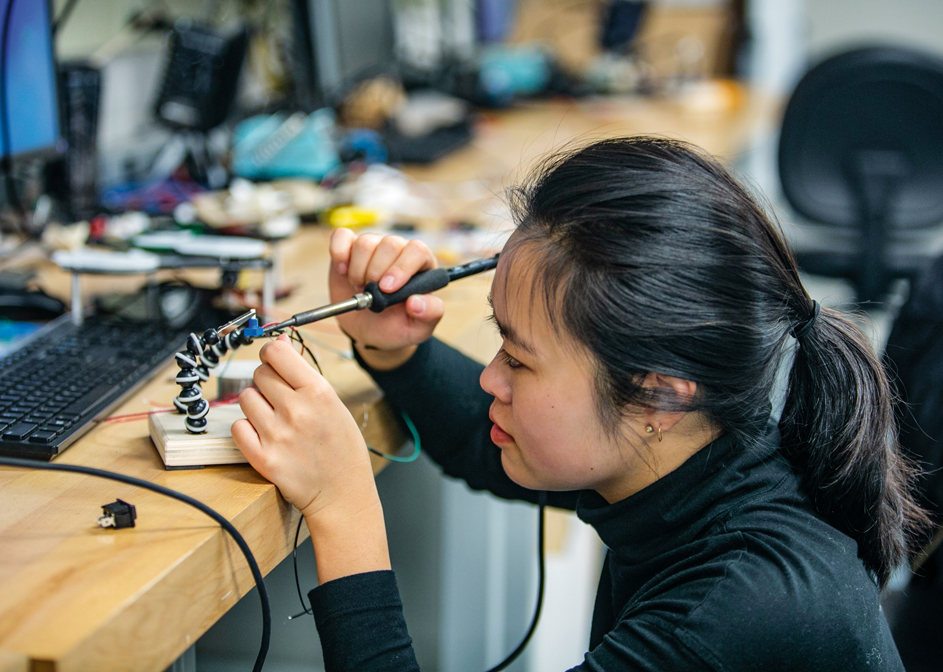
Undergraduate Program
A Practice Integrated Curriculum
The Mechanical Engineering and Applied Mechanics undergraduate curriculum gives our students hands-on, real world lab work in addition to a strong background in theoretical knowledge. The addition of interactive, design-centered assignments is creating educational experiences that are preparing Penn’s mechanical engineers for the problems they will solve in industry and research.
For generations, freshmen in mechanical engineering programs across the country have confronted the challenge of wading through a curriculum front-loaded with math, physics and chemistry, slowly working their way toward the reward of actually applying what they’re learning to the design and building of solutions to real-world engineering problems. Mark Yim, Professor and former MEAM Undergraduate Curriculum Chair, describes this previous, passive model of learning in which students were presented with information and given equations to reach a single right answer, devoid of any context beyond the classroom. “Students don’t necessarily work that way anymore. They want to see sooner how the theories they’re learning apply to the real world.” So MEAM faculty began implementing a practice integrated curriculum, designed to engage freshmen through seniors in applying theories which might otherwise be left on the pages of a textbook.
For example, in Machine Design and Manufacturing (MEAM 201), students work from mechanical drawings and design, model, machine and assemble the parts of a working Stirling engine. “You’re applying everything you’ve learned to make a physical engineering product, rather than just turning in a problem set,” says student Chris Xydis. “It’s a really exciting course,” says senior Amal Rahuman, highlighting the importance of prototyping skills. “As a Penn engineer, if you can go to a company and say, ‘I have the theoretical knowledge, but I also know how to make things…’ that’s what they’re looking for. So it’s really sculpting the curriculum in the right way.”
